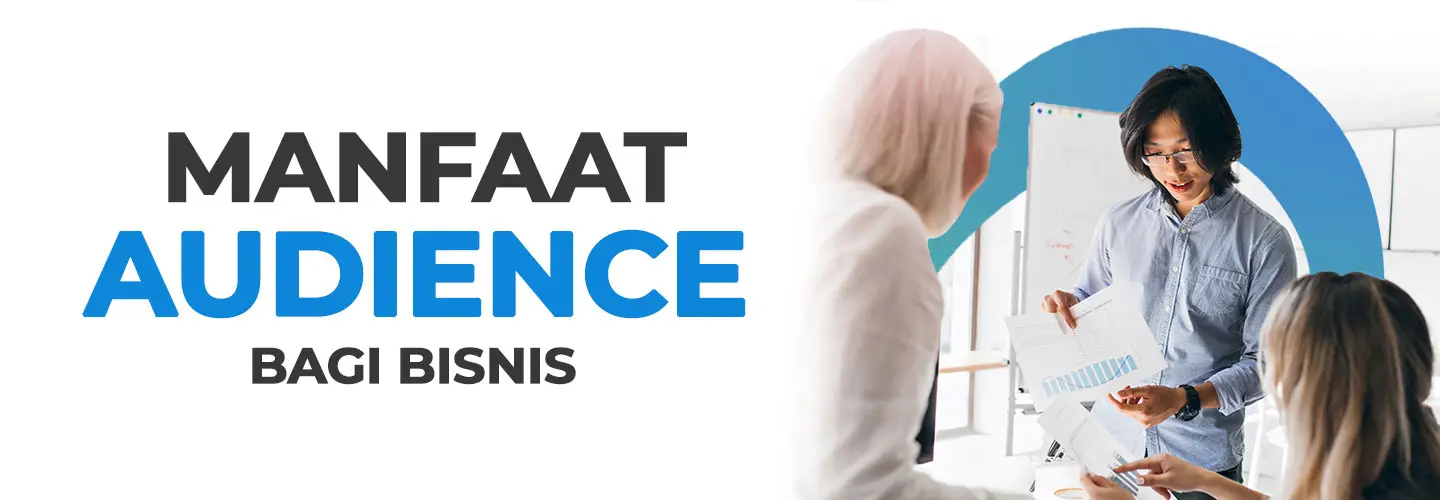What is an Audience? Know the Types, Benefits for Business, and How to Choose

To ensure that your digital marketing strategy is successful and generates conversions and sales, the first step you must understand is the audience. The audience is the main target in every promotional strategy you create and they are the ones you want to turn into consumers or buyers.
In digital marketing, audience data represents the number of people who are affiliated and interested in your product or brand. Therefore, in this article, understand more about the audience.
Starting from the meaning, types, functions, advantages, to how to choose it.
Understanding Audience
An audience is a group of people who interact with you through digital marketing platforms such as social media, email marketing, to blog articles. Harvard Business Review explains that this group of audiences is interested in the content or promotional strategies you create. So they have the potential to become buyers of the products and services you offer.
The audience is willing to read articles, watch videos, and listen to podcasts that you create or are related to the products being sold. They also come from various ages, genders, jobs, lifestyles, preferences, and needs.
However, it is not enough to just have an audience, because for a business strategy or digital marketing, you need a target audience. In digital marketing, target audience is a set of data that you must have before creating a content or promotion strategy.
Some important data about your audience are demographics, customer behavior, and consumer motivations.
In simple terms, here is an explanation of the three data:
- Demographics: detailed and specific information about the audience, such as age, gender, occupation, and lifestyle.
- Customer behavior: information about consumer habits or behavior related to your product, such as audience interaction on the site, email marketing open rates, to how often they buy products.
- Consumer motivations: information related to preferences or what they are looking for from your product. Examples are status/image, product value, to the convenience of using the product.
Types of Audiences
According to FPPT, here are five types of audiences:
Neutral audiences
Neutral audiences are those who recognize your brand and content, but have not decided whether they will like it or not. They only interact by seeing or hearing.
This audience group can be potential consumers, and they can also not. They must be convinced through different types of content from your competitors.
Conflicting audiences
Conflicting audiences are those who don't like your brand and content, but still interact by watching, listening, commenting, and leaving direct messages (DM) on social media accounts.
This type of audience can become potential consumers if there is a change in their minds and perceptions about your product.
Expert audiences
Expert audiences are a group of people who have been exposed to your content or brand on social media, the internet, or in public places. They are people who have knowledge about your brand image and are familiar with your product.
They are potential target audiences that you can target in new digital marketing strategies.
Lay audience
Unlike the previous type, lay audiences are those who do not know your brand and have never been exposed to or interacted with your content at all.
They can be potential target audiences, because their demographics are usually wider.
Business audience
Business audiences are related to B2B businesses. This means that if your brand and content offer products or services that can be used by other businesses, this type of audience should be your target audience.
They are other businesses or brands that need the help of your products or services to operate.
Audience Function
- Helps the process of determining the type, topic, and form of content to be created.
- Increase the number of interactions on the content you create. (both positive and negative).
- Become important data for planning new digital marketing efforts.
- Helps you group who can be the main target audience.
- Helps understand the need for your products or services.
- Recognize the benefits of your products and services in society.
Audience Benefits for Business
- Become potential consumers who will buy your products and use your services.
- Become a free promotion channel through word of mouth and their interactions on your content.
- Build a specific target audience that is in accordance with the products or services you have.
- Help businesses identify competitors with similar products and industries.
- Increase business revenue and profits when they become loyal consumers.
How to Choose a Target Audience for Business
Quoting Nielseniq, here are some easy steps to choose and build a target audience for your brand.
- Analyze their interactions on social media content, blog articles, and your DMs.
- Understand their needs and demands, then adjust them to the function of your product.
- Do keyword research that is widely used in relation to your product.
- Create a survey related to your content and products to the audience.
- Do a review and analysis of your competitors.
It can be concluded that the audience is a group that determines the success of your digital marketing efforts.
They will interact such as watching, listening, commenting, leaving DMs, and sharing your content. Later, you can choose this audience again to be a more specific target audience according to the type of your product or service.
Audience is closely related to the world of digital marketing, so you must understand more about them. Also find out what marketing channels and types of content can reach them.
You can get all this information through the Digital Marketing Fundamental short program from prasmul-eli.
This short program is filled by digital marketing experts and professionals who are ready to share knowledge and best practices of digital marketing for you. Click here to register for the program!
